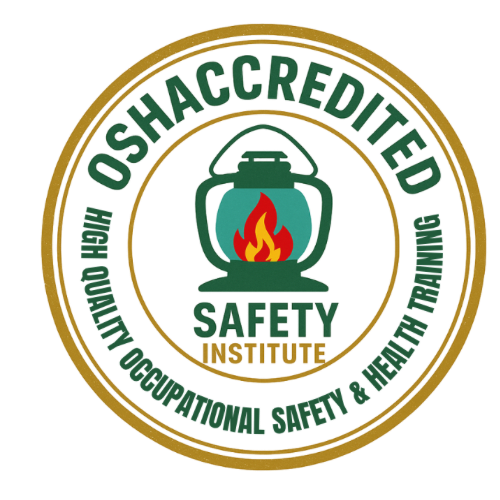OSHA Recordkeeping: Essential Knowledge for Health and Safety Training Compliance
OSHA Recordkeeping: Essential Knowledge for Health and Safety Training Compliance
Workplace safety is essential for both employees and employers. Beyond just meeting regulatory requirements, proper safety and health training practices create a productive, healthy, and secure work environment. One critical aspect of maintaining safety standards is adhering to OSHA (Occupational Safety and Health Administration) recordkeeping regulations, specifically under 29 CFR 1904. OSHA’s recordkeeping rule helps track workplace injuries, illnesses, and fatalities. Understanding and properly maintaining these records is not just about compliance—it also provides valuable insights into workplace safety and can inform decision-making for safety training programs, including OSHA training, online safety courses, and specialized safety training tailored to specific industries. In this blog, we’ll explore the benefits of online health and safety training and provide a thorough guide on how to comply with OSHA regulations regarding recordkeeping.
Understanding OSHA Regulation 29 CFR 1904
The OSHA regulation 29 CFR 1904 is designed to establish standards for workplace injury and illness recordkeeping. This regulation provides the framework for what employers must do when it comes to recording work-related injuries, illnesses, fatalities, and severe incidents. The primary goal is to help ensure the health and safety of workers by tracking and analyzing accidents or health-related events that occur in the workplace. By monitoring trends in these incidents, employers can adjust their safety strategies and improve overall working conditions.
Recordkeeping is not just a legal obligation; it’s also an essential tool for identifying potential hazards and implementing preventive measures. OSHA’s recordkeeping regulations align directly with safety training efforts, as the data gathered can guide decisions about what safety courses or safety and health training initiatives are necessary. Without proper recordkeeping, organizations may miss out on opportunities for critical improvements in safety protocols.

General Recording Criteria
https://www.osha.gov/laws-regs/regulations/standardnumber/1904/1904.7
OSHA 300 and 300A Forms
OSHA provides several forms to assist with recording injuries and illnesses that occur in the workplace. Two of the most significant forms are the OSHA 300 Form and the OSHA 300A Form.
- OSHA 300 Form (Log of Work-Related Injuries and Illnesses): The OSHA 300 Form is used to log all injuries, illnesses, and fatalities that are deemed recordable. These incidents must be documented with the date, description of the injury or illness, and the extent of the injury (e.g., days away from work, job transfer, or restriction). It also includes information about the employee’s department, location, and the type of injury or illness sustained.
- OSHA 300A Form (Summary of Work-Related Injuries and Illnesses): The OSHA 300A Form is an annual summary that must be posted in the workplace. It summarizes the total number of recordable injuries and illnesses from the previous year and includes data such as the total number of cases, the number of days away from work, and the number of job transfers or restrictions. This summary must be posted in a visible area and kept up for the entire month of February, allowing employees to easily view the data.
How to Complete the 300 and 300A Forms
Filling out the OSHA 300 and 300A forms can be a bit overwhelming, especially for employers new to the process. Here’s a breakdown of how to fill out each form correctly:
For the OSHA 300 Form:
- Incident Description: Record the details of the incident, such as the nature of the injury or illness, where it occurred, and what caused it.
- Employee Information: Identify the employee by name, job title, and department.
- Injury Classification: Determine the type of injury (e.g., sprain, fracture, or laceration) and categorize it according to OSHA’s classification system.
- Time Lost: If the injury resulted in days away from work, record the number of days.
- Recording Criteria: Follow OSHA’s guidelines for what constitutes a “recordable” injury or illness.
For the OSHA 300A Form:
- Summarize Data: Use the information recorded on the OSHA 300 Log to complete the 300A form. This includes total cases, the number of days away from work, and any cases that involved restricted duty or job transfers.
- Annual Summary: Ensure that the form reflects the totals for the year, as this information will be used to track trends in injury and illness data.
Completing these forms accurately is essential for maintaining compliance with OSHA regulations and for ensuring that your safety training programs are aligned with the actual risks in your workplace.
OSHA Injury and Illness Recordkeeping and Reporting Requirements
https://www.osha.gov/recordkeeping
How OSHA Defines a Recordable Injury or Illness
Not every workplace injury or illness needs to be recorded according to OSHA. To determine whether an injury or illness is recordable, OSHA has clear guidelines. A recordable injury or illness is one that meets the following criteria:
- Resulting in death
- Resulting in days away from work
- Resulting in restricted work or job transfer
- Medical treatment beyond first aid
- Loss of consciousness
- A significant injury or illness diagnosed by a healthcare professional
In-essence, if the injury or illness results in significant consequences or requires medical intervention beyond first aid, it’s considered recordable. This definition helps ensure that only serious events are documented, and the resulting data is meaningful for identifying safety hazards and trends.

Fatality and Severe Injury Reporting
Under OSHA regulations, fatalities and certain severe injuries must be reported immediately. Employers must report:
- Fatalities: Must be reported within 8 hours of the incident.
- Severe Injuries: These include amputations, loss of an eye, or hospitalization of one or more employees. These injuries must be reported within 24 hours.
Reporting severe injuries promptly allows OSHA to respond quickly, investigating potential workplace hazards and ensuring that proper safety training and prevention measures are implemented.
OSHA Forms for Recording Work-Related Injuries and Illnesses
https://www.osha.gov/sites/default/files/OSHA-RK-Forms-Package.pdf
Maintaining and Posting Records
Maintaining accurate and up-to-date records is essential for compliance with OSHA regulations. Employers are required to keep the OSHA 300 Log for 5 years from the end of the year in which the records were created. The OSHA 300A Summary must be posted in a visible location from February 1 to April 30 of each year, providing transparency about the safety performance of the organization.
It’s important to note that employees have the right to request and review these records, and they should be easily accessible within the workplace.
Employer and Employee Responsibilities
Both employers and employees have responsibilities when it comes to workplace safety and recordkeeping:
Employer Responsibilities:
- Ensure all work-related injuries and illnesses are properly documented.
- Provide safety training, including OSHA training, online safety training, and industry-specific safety courses.
- Post OSHA 300A summaries in a prominent location.
- Ensure compliance with reporting and recordkeeping requirements.
Employee Responsibilities:
- Report any work-related injuries or illnesses to their employer.
- Participate in safety training programs and learn about the risks associated with their job.
- Follow safety procedures to help prevent accidents.
Employers can improve safety outcomes by offering thorough safety training programs, including OSHA courses that address both general safety and specific workplace hazards. Safety training helps workers understand risks and learn how to minimize them, which can directly reduce the number of recordable injuries.
Calculating Injury/Illness Incident Rates
Incident rates are a useful metric for tracking workplace safety performance. Employers can calculate their Total Recordable Incident Rate (TRIR) using the following formula:
This formula helps employers evaluate the effectiveness of their safety training and programs. A lower TRIR indicates better safety performance, while a higher TRIR may indicate the need for enhanced training or safety protocols.

OSHA Recording Keeping Guide
https://workcompsolutionsfl.com/wp-content/uploads/2020/10/OSHA-Recordkeeping-Guide.pdf
Forms Maintenance
Employers should ensure that their OSHA records, such as the 300 Log and 300A Summary, are well maintained. Accurate records are vital for compliance and can also serve as a helpful tool for analyzing trends and improving safety training programs. Online safety training can be an efficient way to meet employee needs while ensuring that safety and health training records are easily accessible for review.
Using Online Safety Training to Learn OSHA Recordkeeping Requirements
Online safety and health training offer numerous benefits, making it an ideal platform for learning OSHA recordkeeping requirements. One of the primary advantages is its flexibility, allowing employees to access health and safety training at their own pace and from any location, which is particularly beneficial for organizations with remote or shift-based workers. Online courses can be tailored to meet specific OSHA regulations, such as 29 CFR 1904, ensuring that employees understand the nuances of injury and illness documentation, reporting procedures, and form completion. Additionally, online safety training often includes interactive modules, quizzes, and real-life scenarios that enhance comprehension and retention of vital safety procedures. By providing up-to-date, accessible, and comprehensive training, online health and safety training platforms help organizations maintain compliance with OSHA standards while fostering a culture of safety.
Conclusion
OSHA recordkeeping, especially through the-use of the OSHA 300 and 300A Forms, plays a critical role in workplace safety. By carefully tracking and maintaining records of injuries and illnesses, employers can better identify hazards, improve safety training, and reduce accidents. Effective safety training programs, including online safety courses and specialized OSHA training, ensure that workers understand the importance of maintaining a safe working environment and are equipped to recognize and respond to potential dangers. The ultimate-goal is a safer workplace for everyone, and compliance with OSHA recordkeeping requirements is a key step toward achieving that goal.
Author: Dr. O’Neil G. Blake, Chief Executive Officer (CEO) of OSHAccredited Safety Institute
MS., MBA., MSc., BSc, CSP., ASP., CSHM., CSMP., MRSA.
Date: 01-02-2025













